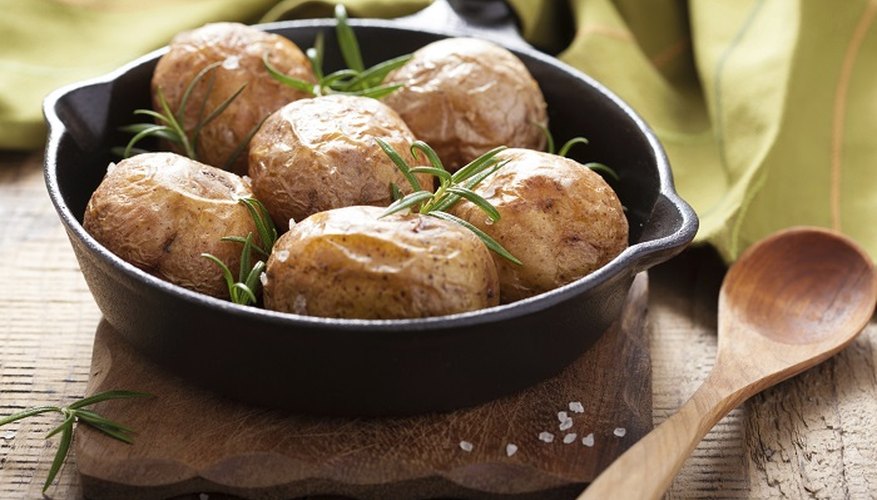Potatoes are an inexpensive way to add substance to any meal. When they are in their raw form, they can sprout or rot if not kept properly. After they are cooked, they don't spoil as easily but can still be susceptible to bacteria. If left too long, they can also lose their taste, due to changes in the structure of the starch. Following some simple steps can keep the cooked potatoes fresh and edible for several days.
- Potatoes are an inexpensive way to add substance to any meal.
- After they are cooked, they don't spoil as easily but can still be susceptible to bacteria.
Let the cooked potatoes cool down. Make sure they are covered as they cool.
Place the cooked potatoes in a plastic container or resealable plastic bag. You may also leave them in the dish or pot you cooked them in if you are using aluminium foil or cling film to cover them.
Cover the potatoes with a lid if in a plastic container or seal them tightly if in a plastic bag. If you are leaving them in the pot or dish you cooked them in, cover them with cling film or aluminium foil --- or use the lid if the pot or dish has one. Cover or seal them tightly so as little air as possible gets in.
- Place the cooked potatoes in a plastic container or resealable plastic bag.
- If you are leaving them in the pot or dish you cooked them in, cover them with cling film or aluminium foil --- or use the lid if the pot or dish has one.
Place the potatoes in the fridge overnight. They will usually be good for at least two to three days, without a significant change in taste. They may last longer, but it is best to eat them within a few days after placing them in the fridge.
TIP
Cooked potatoes can be left out uncovered for about two to four hours before bacteria gets to them, but it is still best to cover them when cooling.
Boiled potatoes can be left in the water they were cooked in while refrigerated.
Cover the pot to let it cool down; then put it in the refrigerator.
WARNING
Mashed potatoes left uncovered in the refrigerator will usually develop a crust on the exposed surface.
